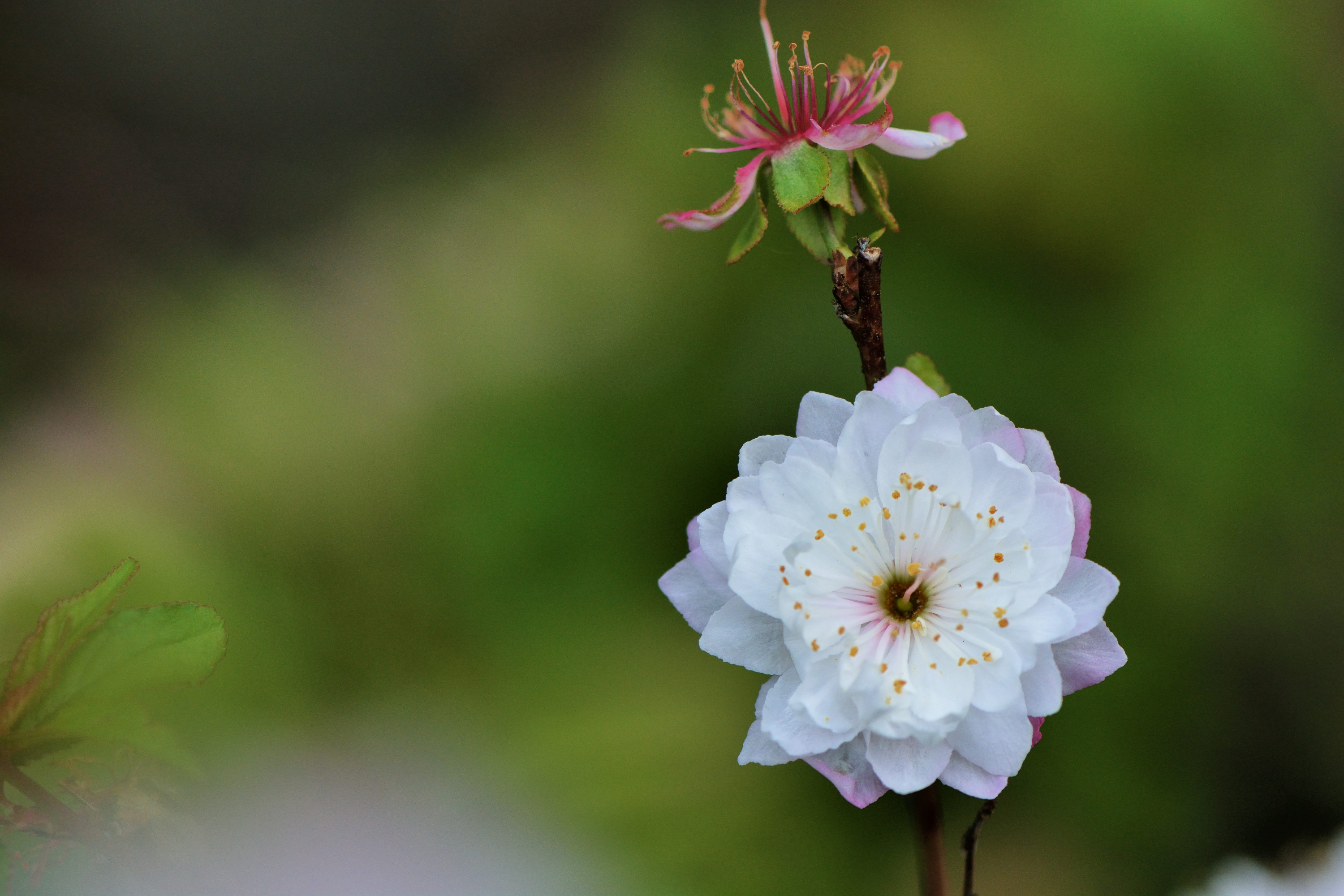Cerasus japonica
(Prunus japonica)

Description
Prunus japonica (also Cerasus japonica), also called Japanese bush cherry, or Oriental bush cherry, or Korean bush cherry is a shrub species in the genus Prunus that is widely cultivated for ornamental use. Its native range extends from Central China through to the Korean peninsula. The shrub reaches 1.5 m by 1.5 m. Its flowers are hermaphrodite and are pollinated by insects. The plant blossoms in May. Its fruit reaches about 14 mm and has an agreeably sweet flavor, therefore it is used in making pies, but its taste is quite sour, reminiscent of that of sour cherry. Each fruit has one seed. The plant usually grows from seed but can also be propagated through cutting or layering. The plant thrives on well-drained and moist loamy soil and prefers little shade or no shade at all. The plant prefers some lime in the soil but not too much. It is mostly found at woodlands or sunny places. The leaves of this plant procure a green dye, while the fruit procures a greenish to grayish dye. Prunus is a genus of trees and shrubs, which includes (among many others) the fruits plums, cherries, peaches, nectarines, apricots, and almonds. Native to the northern temperate regions, 430 different species are classified under Prunus. Many members of the genus are widely cultivated for their fruit and for decorative purposes. Prunus fruit are drupes, or stone fruits. The fleshy mesocarp surrounding the endocarp is edible while the endocarp itself forms a hard, inedible shell called the pyrena ("stone" or "pit"). This shell encloses the seed (or "kernel") which is edible in many species (such as almonds) but poisonous in others (such as apricots). Most Prunus fruit are commonly used in processing, such as jam production, canning, drying, and seeds for roasting. Members of the genus can be deciduous or evergreen. A few species have spiny stems. The leaves are simple, alternate, usually lanceolate, unlobed, and often with nectaries on the leaf stalk along with stipules. The flowers are usually white to pink, sometimes red, with five petals and five sepals. Numerous stamens are present. Flowers are borne singly, or in umbels of two to six or sometimes more on racemes. The fruit is a fleshy drupe (a "prune") with a single relatively large, hard-coated seed (a "stone"). Within the rose family Rosaceae, it was traditionally placed as a subfamily, the Amygdaloideae (incorrectly "Prunoideae"), but was sometimes placed in its own family, the Prunaceae (or Amygdalaceae).
Taxonomic tree:







